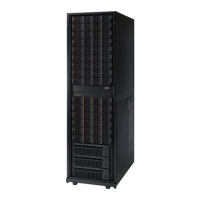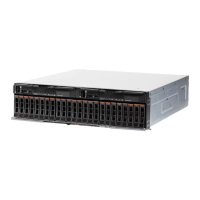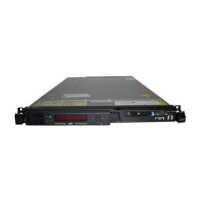Name Type Description Mandatory Default
all_
preceding
Boolean Clears all events
preceding the
specified event.
N no.
internal Boolean Clears XIV-internal
events.
Nno
This command clears alerting events.
In order to ensure that an event was indeed received, an event notification may be
sent repeatedly until it is cleared by a CLI command or the GUI. Such events are
called alerting events. An event is defined as alerting if at the time of the event's
generation it was matched by an alerting rule, meaning a rule that has either
snooze or escalation definitions.
Notifications for the alerting event are sent until it is cleared by this command. The
clearing operation does not imply that the problem has been solved. It only implies
that the event has been noted by the relevant person who takes responsibility for
fixing the problem.
A user may either clear a specific event or clear all alerting events.
Example:
event_clear event_id=87
Output:
Command executed successfully.
Access Control:
User Category Permission Condition
Storage administrator Conditionally Allowed Only the technician can run this
command with the internal
parameter
Storage integration administrator Disallowed N/A
Application administrator Conditionally Allowed Only the technician can run this
command with the internal
parameter
Security administrator Disallowed N/A
Read-only users Disallowed N/A
Technicians Allowed N/A
Completion Codes:
v ONLY_TECHNICIAN_CAN_REFER_TO_INTERNAL_EVENT_OBJECTS
Only technician can refer to internal event objects
Chapter 14. Event Handling 277

